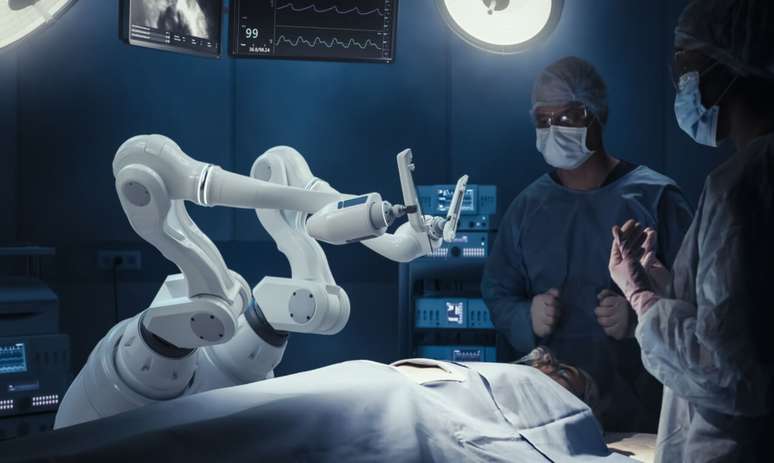Robotic surgery arrived in Brazil recently and, therefore, is still surrounded by myths and doubts about how it works.
Have you ever imagined a surgery “done” by robots? Robotic surgery is another example of the progress and importance of artificial intelligence in healthcare. The method arrived in Brazil just over a year ago and helps reduce hospitalization times, reduces the risk of hospital infections and allows for faster recovery.
And since robotic surgery started to be used in Brazil, some myths about the topic have emerged, which is extremely common when a new topic appears, especially related to medicine. With this in mind, Dr. Guilherme Berenhauser Leite, a specialist in robotic surgery, has separated some claims made to demystify the topic.
According to him, although this type of procedure is in its initial stage in Brazil, it has existed for more than 20 years. He discovered some myths and truths clarified by the doctor:
1. The robot works by itself
In robotic surgery, the robot does not operate alone. “It is actually an advanced instrument controlled by the surgeon, which acts as if it were an extension of the surgeon’s arms. The robot provides a precise and extensive interface for the surgeon to perform minimally invasive procedures, but it is the surgeon who takes all the decisions decisions and carries out actions”, explains the doctor.
According to Guilherme, robotic technology allows us to perform everything from simple surgeries to major surgeries. However, they are all performed in a minimally invasive manner, as they offer greater precision, stability and visibility, which can result in safer and more effective surgeries. “But always with the supervision and direct intervention of the doctor”, he reiterates.
2. Surgery in case of power outages
In robotic surgery, the lack of electric light does not represent a significant problem due to the redundancy systems present in hospitals. These systems ensure that the surgery continues without interruption.
“Hospitals typically have UPS systems that provide uninterrupted power in the event of a power outage, ensuring that surgical equipment, including the robot, continues to function,” says the expert.
Additionally, hospitals also have back-up power generators that come into play in the event of a power outage. These generators are capable of keeping all essential hospital facilities, including operating rooms, fully operational.
“Thanks to these redundancy systems, we often do not notice situations in which there is no light, guaranteeing the safety and continuity of robotic interventions”, he underlines.
3. It’s an option for elderly, obese and endometriosis patients
“Yes, robotic abdominal diastasis correction can be performed in older adults, as long as they are in good overall health and have an adequate preoperative evaluation,” says Dr. Guilherme.
However, it is important to consider that in elderly patients the surgical risk and pre-operative care may be a little more complex due to possible pre-existing health conditions, the professional points out.
Source: Terra
Ben Stock is a lifestyle journalist and author at Gossipify. He writes about topics such as health, wellness, travel, food and home decor. He provides practical advice and inspiration to improve well-being, keeps readers up to date with latest lifestyle news and trends, known for his engaging writing style, in-depth analysis and unique perspectives.









